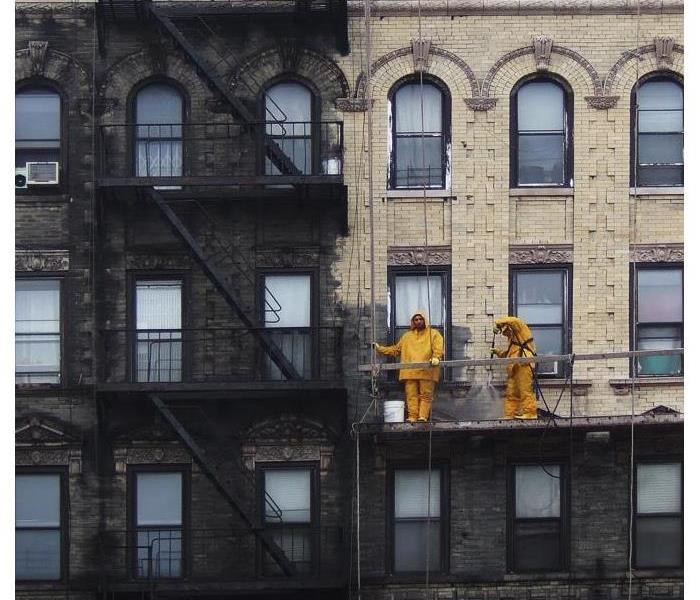Soot Cleanup & Removal Tips
11/15/2017 (Permalink)
Soot is the black residue left behind on fireplace walls and charcoal grills after the flames go out. A house fire creates a great deal of it because wood, plaster, natural fibers, synthetics, foams and plastics all create soot when they burn and most homes are full of these materials. Soot sticks to any surface that’s cooler than the fire itself, usually walls, ceilings and other hard surfaces.
Different types of fires produce different types of soot, which require different cleaning methods, so it’s best to leave it to the professionals. High oxygen fires produce soot that is best cleaned with a dry cleaning sponge or dry chemical sponge. Low oxygen fires can be cleaned with a wet sponge. However, if soot from a high oxygen fire is cleaned with a wet sponge, it can smear and cause even more damage. If you do decide to vacuum up soot before the professionals arrive, do not use an ordinary household vacuum cleaner, which is not designed for that type of cleaning. Use a shop vac, or other type of heavy duty vacuum cleaner. Always hold the nozzle about a half inch away from the surface that’s being cleaned. Making contact with the soot can smear it and make an even bigger mess.
While waiting for experts to arrive, there are a few things to keep in mind.
- Never touch anything during your initial inspection, to avoid spreading the soot.
- Wear gloves, a mask and long sleeves and pants when working in soot covered room to protect your skin and lungs.
- Keep the room ventilated to minimize breathing in soot particles and allow smoky smells to dissipate.
- Remove as much debris as possible to allow for easy cleanup.
If you’ve just experienced a fire at your home or business in the Albuquerque, NM area, call the professionals at SERVPRO of NE Albuquerque Restoration.






 24/7 Emergency Service
24/7 Emergency Service
